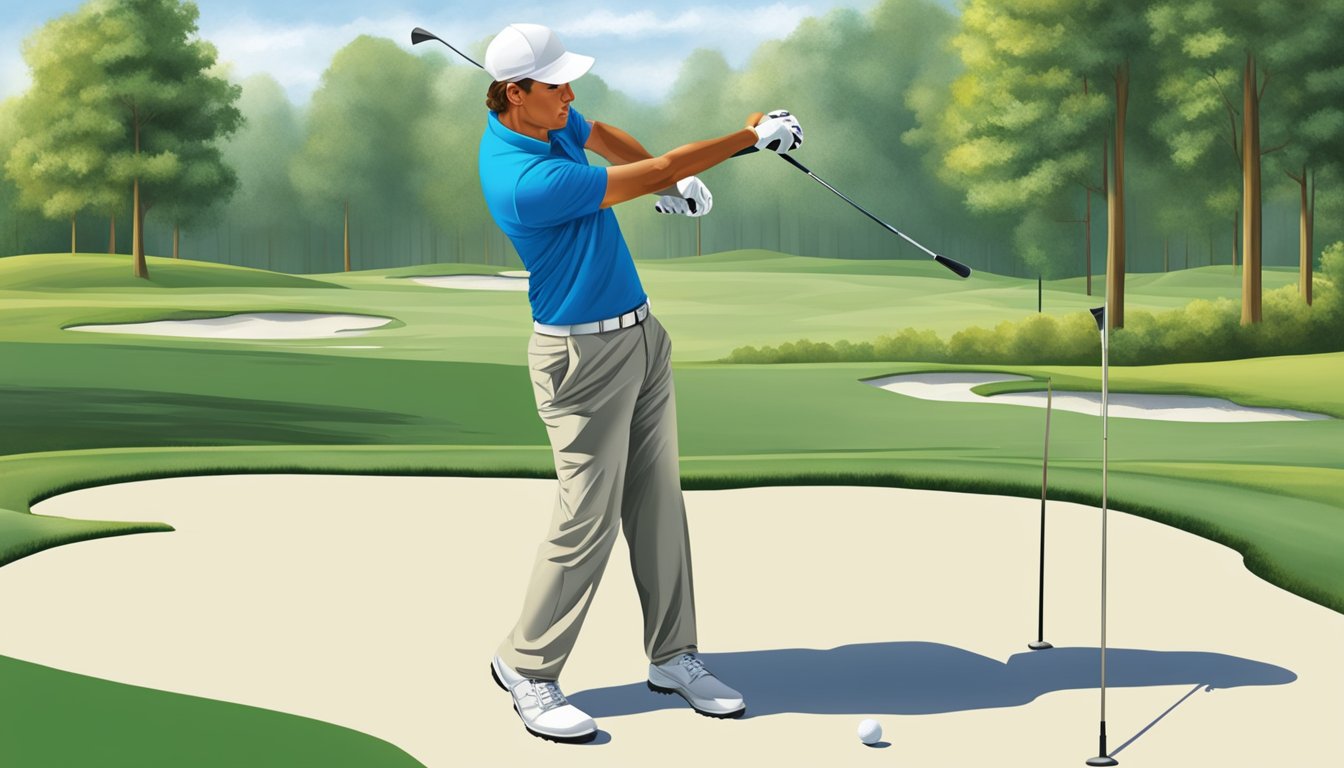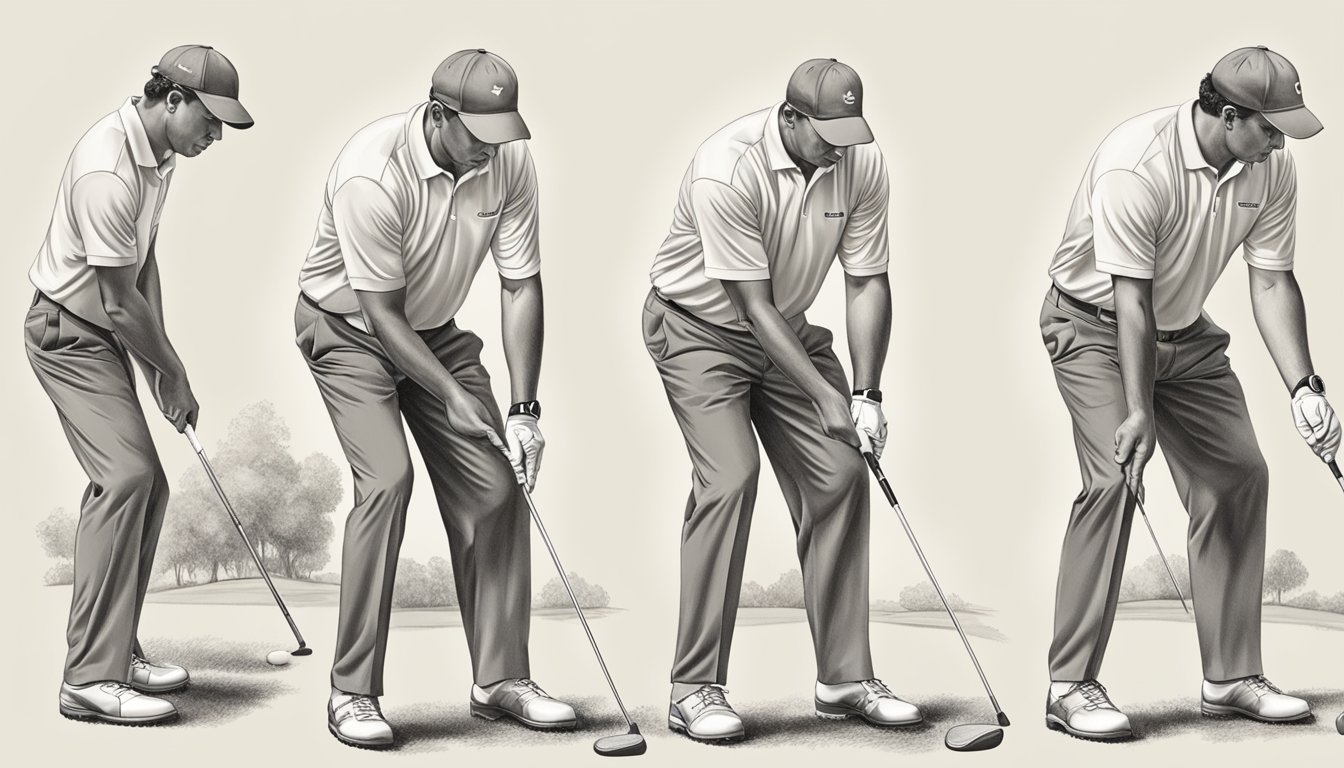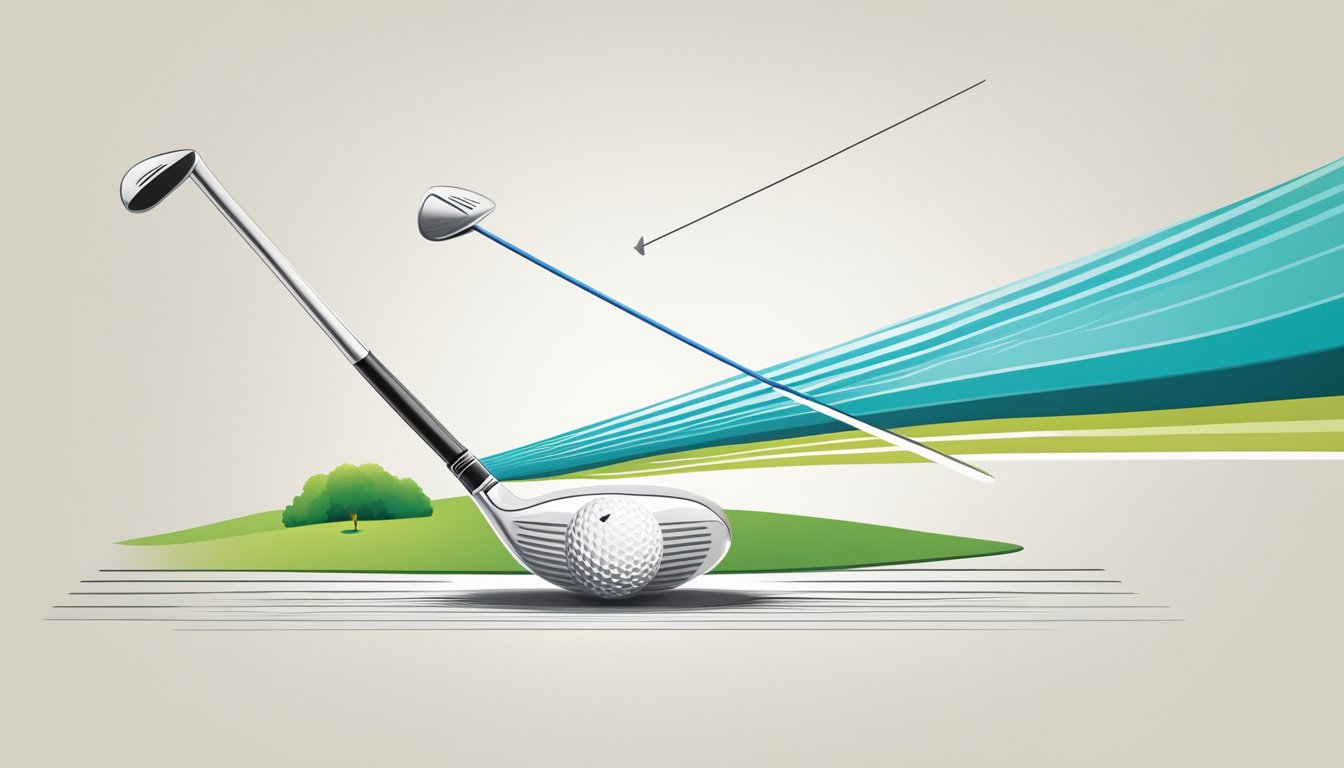If you are a golfer, you have likely encountered the dreaded slice. A slice is a shot that veers off to the right (for right-handed golfers) and can be frustrating to deal with. Fortunately, there are techniques you can use to fix a slice and improve your game.
To fix a slice, it is important to first understand what causes it. A slice typically occurs when the clubface is open at impact, causing the ball to spin to the right. This can be due to a number of factors, including an improper grip, an outside-in swing path, or poor weight transfer. By identifying the cause of your slice, you can begin to work on correcting it.
There are several techniques you can use to fix a slice, including adjusting your grip, changing your swing path, and improving your weight transfer. Practicing with drills can also be helpful in developing muscle memory and improving your swing. With the right techniques and plenty of practice, you can eliminate your slice and become a more consistent player.
Key Takeaways
- Understanding the causes of a slice is crucial in fixing it.
- Techniques such as adjusting your grip and swing path, improving weight transfer, and practicing with drills can help fix a slice.
- Consistent practice and progress tracking are important in eliminating a slice and improving your game.
Understanding the Golf Slice
https://www.youtube.com/watch?v=4STWsFzFh9E&embed=true
If you’re a slicer, you know how frustrating it can be to watch your ball veer off to the right (for right-handed golfers) or left (for left-handed golfers). Understanding the causes and impact of a slice is the first step to fixing the problem.
Causes of a Slice
A slice is caused by a combination of an open clubface and an outside-in swing path. When you swing, the clubface is the only thing that makes contact with the ball, so if it’s open at impact, the ball will spin to the right (for right-handed golfers) or left (for left-handed golfers). The outside-in swing path exacerbates the problem by adding side spin to the ball.
There are several factors that can cause an open clubface and outside-in swing path, including a weak grip, an open stance, and an over-the-top downswing. These issues can be compounded by a backswing that’s too steep or an upper body that’s too active.
Impact of a Slice on Your Game
A slice can be a major problem for golfers, as it can lead to lost balls, penalties, and frustration. Slicers often struggle to hit the ball straight and may find themselves in trouble on the right side of the course (for right-handed golfers) or left side of the course (for left-handed golfers).
In addition to the obvious issues with direction, a slice can also lead to a loss of distance. When the ball spins to the side, it doesn’t travel as far as it would if it were hit straight. This can be a big problem with the driver, as golfers often want to hit the ball as far as possible off the tee.
To hit the ball straighter, you need to address the root causes of your slice. By fixing your swing path and clubface alignment, you can start hitting the ball straighter and more consistently.
Techniques to Fix a Slice
https://www.youtube.com/watch?v=xG66WXfnCTg&embed=true
If you’re struggling with a slice, you’re not alone. It’s a common problem for many golfers, but fortunately, there are several techniques you can use to fix it. Here are three effective strategies to try:
Adjusting Your Grip
One of the most common causes of a slice is a weak grip. If your thumbs are pointing straight down the handle, you’re setting yourself up for trouble. Instead, try adjusting your grip so that your hands are in a stronger position. According to Golf Digest, you should be able to see two or three knuckles on your lead hand when you look down at it.
Improving Your Swing Path
Another key factor in fixing a slice is improving your swing path. If you’re coming over the top on your downswing, you’re likely to cut across the ball and send it spinning off to the right. Instead, try to come into the ball on a shallower path, with the clubhead approaching the ball from the inside. This will help you to hit the ball straighter and with more power.
Mastering the Clubface Control
Finally, it’s important to master your clubface control. If the clubface is open at impact, you’re going to slice the ball. To prevent this, try to keep the clubface square to the target line throughout your swing. This will help you to hit the ball straighter and with more accuracy.
To improve your clubface control, try hitting shots with a stronger grip. This will help you to keep the clubface from opening up too much at impact. You can also work on your follow-through, making sure that your palms are facing the target and your wrists are fully extended. This will help you to square up the clubface and hit the ball straighter.
In addition to these techniques, it’s important to practice regularly and take lessons from a qualified instructor. With time and effort, you can eliminate your slice and start hitting the ball straighter and farther. So get out there and start working on your game!
Practicing with Drills
https://www.youtube.com/watch?v=6m9PRvF7oeY&embed=true
If you’re struggling with a slice, practicing with drills can help you improve your swing path, grip, and clubface control. Here are some drills to try:
Drills for Better Grip
A proper grip is essential for a good golf swing. To improve your grip, try the following drill:
- Vardon Grip Drill: Take your grip on the club using the Vardon grip. Then, place a golf ball in your left hand and grip it with your fingers. This drill will help you get a better feel for the proper grip and release.
Drills for Improved Swing Path
The swing path is the direction the clubhead is traveling as it strikes the ball. To improve your swing path, try the following drill:
- Towel Drill: Place a towel under your left armpit and swing the club. This drill will help you keep your arms close to your body and promote an inside-out swing path.
Drills for Clubface Control
Clubface control is critical for hitting straight shots. To improve your clubface control, try the following drill:
- Alignment Stick Drill: Place an alignment stick on the ground parallel to your target line. Then, aim your clubface at the stick and swing. This drill will help you learn to aim left to compensate for your slice and promote a more square clubface at impact.
Remember to practice these drills regularly and record yourself on video to monitor your progress. A coach or training aids can also help you improve your ball striking and tee box performance.

Choosing the Right Equipment
« Callaway Apex DCB Irons Review: The Best Golf Irons for High Handicap Players
Getting Swing on Plane: Tips for a More Consistent Golf Swing »
When it comes to fixing your slice, selecting the right equipment is essential. In this section, we will cover two aspects of equipment selection that can help you stop slicing: selecting the right club and understanding loft and shaft flex.
Selecting the Right Club
One of the most important pieces of equipment for fixing your slice is the driver. Golf Digest suggests that you should “look for a driver with a larger head size, perimeter weighting, and a lower center of gravity” to help reduce your slice. A larger head size will provide a larger sweet spot, which can help you hit the ball more consistently. Perimeter weighting can also help increase the club’s stability and reduce the amount of twisting on off-center hits. A lower center of gravity can help you launch the ball higher, which can help reduce spin and promote a straighter ball flight.
Understanding Loft and Shaft Flex
The loft of your driver can also play a significant role in reducing your slice. A driver with a higher loft can help you launch the ball higher and reduce spin, which can help promote a straighter ball flight. Golf Digest suggests that you should “look for a driver with a loft of at least 10.5 degrees” to help reduce your slice.
The shaft flex of your driver can also play a role in reducing your slice. A shaft that is too flexible can cause the clubhead to lag behind your hands, which can lead to an open clubface at impact and a slice. A shaft that is too stiff can cause you to hit the ball too low and with too much spin, which can also lead to a slice. It is essential to find the right balance between flexibility and stiffness to promote a consistent and straight ball flight.

In summary, selecting the right equipment can play a significant role in reducing your slice. Look for a driver with a larger head size, perimeter weighting, and a lower center of gravity. Aim for a driver with a loft of at least 10.5 degrees and find the right balance between shaft flexibility and stiffness to promote a consistent and straight ball flight.
Consistency and Progress Tracking
Consistency is key to improving your golf game, and tracking your progress is the best way to ensure that you are making steady improvements. One of the best ways to track your progress is by keeping score. It may seem obvious, but keeping track of your scores can help you identify areas where you need to improve. By tracking your scores, you can see if you are consistently shooting in the same range or if there are areas of your game that need work.
Another way to track your progress is by monitoring your handicap. Your handicap is a measure of your golfing ability, and it is calculated based on your scores. By monitoring your handicap, you can see if you are improving over time. If your handicap is decreasing, it means that you are becoming a better golfer.
Consistency is also important when it comes to your swing. One of the most common causes of a slice is an inconsistent swing. To ensure that you are swinging consistently, you should focus on your weight shift, ball position, and swing speed. Your weight should shift from your back foot to your front foot during your swing, and your ball position should be slightly forward of center. Additionally, your swing speed should be consistent throughout your swing.

Instruction can also help you improve your consistency. A golf instructor can help you identify areas where you need to improve and provide you with drills and exercises to help you improve. Additionally, an instructor can help you develop a consistent swing that will help you avoid slicing the ball.
Finally, it is important to set goals for yourself and track your progress towards those goals. Whether your goal is to break 90 or make it onto the PGA Tour, tracking your progress can help you stay motivated and focused on achieving your goals. By tracking your progress, you can see how far you have come and how far you still have to go.
Frequently Asked Questions
https://www.youtube.com/watch?v=xQq9ncQUrwk&embed=true
How can I fix my slicing problem?
If you’re struggling with a slice in your golf swing, there are a few things you can try to fix the problem. One common solution is to adjust your grip. According to Golf Digest, strengthening your grip can help promote a more neutral clubface at impact, which can help reduce the amount of spin on the ball. Another solution is to work on your swing path. By swinging more from the inside, you can help prevent the clubface from opening up too much and causing a slice.
What are some common causes of a slice in golf?
There are several common causes of a slice in golf. One of the most common is an open clubface at impact. When the clubface is open, it can cause the ball to spin off to the right (for right-handed golfers). Another common cause is an outside-to-inside swing path. This can cause the clubface to open up and the ball to spin off to the right. Poor posture and grip can also contribute to a slice.
What are some drills to help stop slicing the ball?
There are several drills you can try to help stop slicing the ball. One effective drill is to place a tee in the ground just outside your target line and try to hit the ball without touching the tee. This can help promote an inside-to-out swing path and prevent the clubface from opening up too much. Another drill is to place a headcover or towel under your left armpit (for right-handed golfers) and try to swing without letting it fall out. This can help promote a more connected swing and prevent over-the-top moves.
How can I adjust my stance to prevent slicing?
Adjusting your stance can be an effective way to prevent slicing. One common adjustment is to flare your left foot (for right-handed golfers) out slightly. This can help promote a more open hip position, which can help prevent over-the-top moves and promote a more inside-to-out swing path. Another adjustment is to move the ball back in your stance. This can help promote a more descending strike and prevent the clubface from opening up too much.
What is the difference between a slice and a hook in golf?
A slice and a hook are two common ball flights in golf. A slice is when the ball curves off to the right (for right-handed golfers), while a hook is when the ball curves off to the left. A slice is typically caused by an open clubface at impact, while a hook is typically caused by a closed clubface at impact.
Are there any free resources to help fix a slice in my golf swing?
Yes, there are several free resources available to help fix a slice in your golf swing. One great resource is YouTube. There are many golf instructors who offer free tips and drills on their channels. Another resource is your local golf course or driving range. Many courses offer free clinics or lessons to members, and some driving ranges have instructors on staff who can offer free advice. Finally, there are many golf forums and online communities where you can ask for advice and get feedback on your swing.










